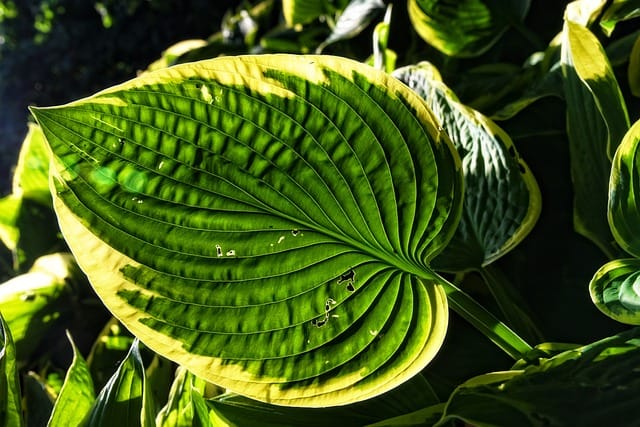The Role of Perennial Plants in Low-Maintenance Gardens
Welcome to our comprehensive guide on the role of perennial plants in low-maintenance gardens

In this article:
- Introduction
- Benefits of Low-Maintenance Gardens
- What are Perennial Plants?
- Characteristics of Perennial Plants
- Perennial Plants for Low-Maintenance Gardens
- Choosing the Right Perennial Plants
- Designing with Perennial Plants
- Maintenance Tips for Perennial Plants
- Combining Perennial Plants with Other Garden Elements
- The Environmental Impact of Perennial Plants
- Success Stories of Low-Maintenance Gardens with Perennial Plants
- Conclusion
Introduction
Welcome to our comprehensive guide on the role of perennial plants in low-maintenance gardens. In this article, we will explore the benefits of low-maintenance gardens, discuss what perennial plants are, highlight their characteristics, and provide tips on selecting, designing, and maintaining perennial plants in your garden. We will also examine the environmental impact of perennial plants and share success stories of low-maintenance gardens. Let's get started!
Benefits of Low-Maintenance Gardens
Low-maintenance gardens have gained popularity in recent years due to their numerous benefits. Some of the advantages of low-maintenance gardens include:
- Reduced time and effort required for maintenance
- Lower water consumption
- Financial savings on fertilizers and pesticides
- Sustainable gardening practices
- Increased biodiversity and habitat creation
What are Perennial Plants?
Perennial plants are a key component of low-maintenance gardens. They are plants that live for more than two years and often come back year after year. Unlike annual plants that complete their life cycle in a single growing season, perennials provide long-term beauty and stability to your garden. They come in various forms such as flowers, shrubs, and grasses.
Characteristics of Perennial Plants
Perennial plants possess several characteristics that make them suitable for low-maintenance gardens:
- Resilience: Perennials are highly resilient and can withstand various environmental conditions.
- Drought tolerance: Many perennial plants have adaptations that allow them to survive in low-water conditions.
- Established root systems: Perennials develop extensive root systems that help them absorb water and nutrients efficiently.
- Attractiveness: Perennial plants offer aesthetic appeal with a wide range of colors, textures, and forms.
- Longevity: Once established, perennials can thrive for many years without the need for replanting.
Perennial Plants for Low-Maintenance Gardens
When selecting perennial plants for low-maintenance gardens, it is essential to choose varieties that require minimal care. Some popular low-maintenance perennial plants include:
- Lavender
- Daylilies
- Sedums
- Black-Eyed Susans
- Hostas
- Ornamental grasses
Choosing the Right Perennial Plants
To ensure the success of your low-maintenance garden, it is crucial to consider several factors when choosing perennial plants:
- Sunlight requirements
- Soil conditions
- Watering needs
- Climate suitability
- Attractiveness and compatibility with other plants
Designing with Perennial Plants
The arrangement of perennial plants is a critical aspect of low-maintenance garden design. Consider the following tips when designing with perennial plants:
- Create focal points with taller perennials
- Group plants with similar water and sunlight requirements
- Use a variety of textures and colors to add visual interest
- Ensure adequate spacing for growth and airflow
Maintenance Tips for Perennial Plants
Although low-maintenance, perennial plants still require some care to thrive. Follow these maintenance tips to keep your perennial plants healthy:
- Regularly remove weeds
- Prune and deadhead as needed
- Monitor for pests and diseases
- Provide adequate water during dry spells
- Fertilize sparingly and use organic options
Combining Perennial Plants with Other Garden Elements
Perennial plants can be combined with other garden elements to create a well-rounded low-maintenance landscape. Some complementary elements to consider include:
- Evergreen shrubs for year-round interest
- Hardscape features such as paths and seating areas
- Native plants for ecological diversity
- Mulch to conserve moisture and suppress weeds
The Environmental Impact of Perennial Plants
Perennial plants have a positive environmental impact and contribute to sustainable gardening practices. Some of their environmental benefits include:
- Reduced water consumption
- Enhanced soil health and erosion control
- Pollinator attraction and habitat creation
- Carbon sequestration and climate change mitigation
Success Stories of Low-Maintenance Gardens with Perennial Plants
Many gardeners have successfully created beautiful and low-maintenance gardens using perennial plants. These success stories serve as inspiration and provide practical insights for your own garden. Some notable examples include:
- The Highline Park in New York City
- The Beth Chatto Gardens in the United Kingdom
- The Denver Botanic Gardens in Colorado
Conclusion
In conclusion, perennial plants play a vital role in low-maintenance gardens, offering long-lasting beauty and stability. Their resilience, attractiveness, and various environmental benefits make them an excellent choice for any garden. By selecting the right perennial plants, designing with intention, and providing proper maintenance, you can create a low-maintenance garden that thrives for years to come.
